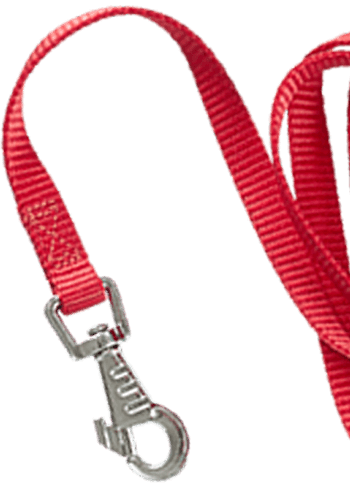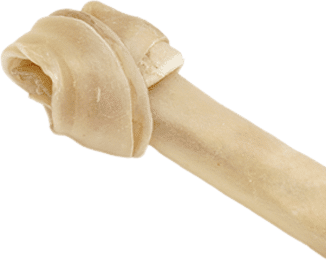


If you’re the proud owner of a Labrador Retriever, then congratulations: You now know what it’s like to find dog hair everywhere.
Because of their double-layered coats, labs shed the most during two seasons, which are when the weather changes the most drastically, like spring and fall. However, labs also shed a lot during the months in between—which means that when it comes to your lab’s fur, you might feel like you’re fighting an uphill battle.
The good news is that you’re not alone. With a little work and a few different methods, you can learn how to stop labs from shedding so much throughout the year.
Like people, dogs also shed their hair throughout the day. And, like many other animals, your dog’s coat is vital for survival: A healthy coat can help regulate the body’s climate control system while also protecting the skin.
Shedding is the body’s way of getting rid of old or damaged hair to keep the skin healthy and clean. The amount of shedding depends on the breed, the weather, the dog’s health, and several other factors.
The bottom line says that shedding is a natural phenomenon that all dogs experience—but it’s important to be aware of when your dog’s coat is shedding a little too much.
Whether it’s humans, cats, or dogs, shedding is generally a regular and healthy occurrence. Shedding in dogs is the body’s way of ridding itself of old, unneeded hair made up from the undercoat. Since labs are double-coated, shedding is expected—but at what point should you be concerned?
Unfortunately, lots of different things can affect how your pup sheds its coat, which can make it hard to target precisely when something is wrong. That’s why it’s a good idea to become familiar with your pet’s shedding habits so that it’s easier to notice when it becomes abnormal.
Several reasons could cause excess shedding in your dog, such as:
“None of this is easy stuff to determine,” says DVM Jeff Levy. “The most important thing to do if you suspect your pet has excessive shedding, scratching, or changes in behavior is to consult your veterinarian so we can help you determine the cause and treatment.”
There are quite a few breeds that are more likely to shed than others—and Labrador Retrievers near the top of the list.
Because of their unique double coats, labs shed a lot throughout the year, and especially more so when the seasons begin to change. In the spring, labs will shed a lot of hair in an attempt to lose their winter coat and prepare for the summer. During fall, they’ll regain the hair to bulk up for the winter temperatures.
A double coat makes up the undercoat and topcoat of a dog’s fur. Only a few breeds have double coats, like Labrador Retrievers, German and Australian Shepherds, Pomeranians, Siberian Huskies, among a few others.
Labs developed their trusty double coat centuries ago when they were being bred as fisherman’s dogs in Newfoundland. To be great water dogs, labs needed to have a waterproof coat with another layer to help regulate their body temperature in cold waters—which is where the double coat comes in.
The first layer, the undercoat, is short and dense. It is designed to keep your dog’s body warm even when swimming or playing in cold temperatures. The second coat, the topcoat, is longer and silkier. It helps keep the coat free of dirt and water.
When your lab sheds in the spring, their bodies try to get rid of their thick and dense winter coat. That means that you should expect excess shedding anytime between March and May of each year.
Later on, labs shed that same summer coat and begin to bulk up for the winter months when fall begins. This means that you can expect excess shedding again between October and December each year.
Think of it this way: When temperatures start to drop, you put away your summer clothing and begin unpacking your winter gear. Then, when it begins to warm up, you pack away your winter coats and take out your summer clothing again. The same can be said for labradors.
Labradors shed a lot—and if you have one of your own, then you’ve probably wondered: How do I get my dog to stop shedding so much?
The truth is that you can’t eliminate shedding completely, but there is good news: With these five helpful tips, you can learn how to reduce dog shedding to a point where everybody will notice that there’s less hair going around.
As you know, labs have a double coat. Depending on the time of year, double coats are extra thick and hard to rake through, even with your best pet brush. If you plan to have a Labrador, it’s wise to invest in a top-notch de-shedding tool.
How a popular de-shedding brush, FURminator, works with your lab’s coat
Regular brushes—even those designed to combat against shedding—typically only target the topcoat debris, which means that the undercoat is still left untouched. Heavy-duty deshedding tools are designed to remove loose or dead hair from the undercoat without damaging the topcoat so that both coats are rid of extra debris and left looking shiny and healthy.
“Labrador Retrievers shed twice a year in handfuls,” says Marilyn Little of the Labrador Retriever Club. “Combing them every day during heavy shedding and bathing in warm water gets rid of the dead hair and saves it from falling all over your floor.”
It’s a good idea to use the de-shedding tool at least twice a year when the seasons change temperature, like in spring and fall. At these points, your lab is shedding its coat or growing it thicker for the cooler months. In between, do your best to brush your lab’s coat daily with a regular brush.
Baths aren’t only a great way to get that stinky smell off your lab, but the warm water also helps loosen and remove fur that’s ready to be shed but hasn’t yet come off.
Some experts say that labs only need to be bathed once every couple of months, while others say once a month is more ideal. There is no set rule on how often your lab should be bathed, whether that’s on a schedule or whenever you feel it’s time. But if you do decide to bathe your lab more regularly, you might be surprised to see how much loose dog hair is found at the bottom of the tub.
If you don’t plan to brush your lab at least once a day, then you’ll be spending a lot of your free time vacuuming loose hairs. One of the best ways to take the stress out of constantly chasing after furballs around your home is to invest in a smart vacuum.
Most smart vacuums come with an app that you can download onto your phone to control when (and where) the vacuum goes even when you’re not home. This means that you can turn on the vacuum to clean while you’re out of the house and expect to come home to a de-furred house every day.
Did you know that one of the most common reasons for over shedding is because of dehydrated skin?
A good rule of thumb is that your lab should have an ounce of water per pound of body weight per day. So, if your lab is around 70 pounds, she should drink 70 ounces of water each day. If you suspect your lab is not drinking enough water, it could lead to skin dehydration, causing increased shedding around your home.
If your dog isn’t interested in drinking as much as she should, then try rewarding her with a treat every time she goes for a drink. You can also flavor the water with bone broth or chicken broth, which can be more enticing than plain water.
Keeping a healthy diet for your lab is the best way to ensure that they live a long and healthy life. Unfortunately, it may be time to change your lab’s diet if you notice excessive shedding.
Giving your lab supplements can also help if your lab sheds excessively, so we always recommend providing them with a good supplement to help make sure they get everything they need. By doing so, you can help prevent excessive shedding and keep your dog’s coat healthy.
“The number-one reason for excessive shedding is a poor diet,” says DVM Roy Cruzen. “People go to discount stores, buy a 40-pound bag of cheap food, and then see their pets’ shedding increase. Even though the food meets the minimum quality requirements, it may not have enough animal protein or minerals to maintain your dog’s optimal health.”
For Labradors, there have been numerous studies on what they need to stay healthy well into their adult years. Generally, you’ll want proteins, fats, carbs, vitamins, and minerals as a consistent part of your lab’s diet, with these specific amounts:
The fact is that although some food brands look like they have the same amount of protein as other brands, it all comes down to the quality of the food. You want to ensure that there are no fillers in your dog’s food, and you can identify whole ingredients, like meat and vegetables. You can learn more about your puppy or adult lab’s diet in the Snowy Pines’ Feeding Guide.
Labradors shed a lot, but you don’t need to go crazy with the vacuum every day. With these tips, you can expect way less dog hair around your home:
At Snowy Pines White Labs, you can learn more about what your Labrador Retriever needs and what you can do to ensure a long and happy life for years to come.